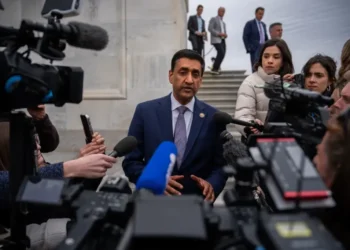How Trump’s “Big, Beautiful Bill” Shifts Wealth in America
House Republicans have pushed through a massive tax and spending bill, championed by former President Donald Trump, after an intense all-night session and last-minute revisions. Nicknamed the “one big, beautiful bill,” this sweeping package promises deep tax cuts—mostly benefiting the wealthy—while slashing aid programs like Medicaid and food stamps, which millions of lower-income Americans rely on.
The Big Picture: Who Gains, Who Loses
At the heart of the bill is a controversial trade-off. Wealthier Americans will enjoy the lion’s share of tax relief, while low-income families face reduced support through major cuts to social safety nets.
- Top 20% of earners would receive 60% of the total tax cut, with the top 5%—those making over $460,000—getting more than a third of it.
- Middle-income households would see modest tax savings, averaging about $1,840.
- Lower-income Americans would see the smallest benefit: an average tax cut of just $160.
But those modest tax breaks may be wiped out by deeper spending cuts. The bill slashes nearly $1 trillion from federal aid programs over the next decade, with Medicaid losing about $700 billion and food assistance (SNAP) facing a $267 billion cut.
Deficit-Fueled Cuts and Expiring Promises
Despite the cuts, the bill is projected to add $3.1 trillion to the national debt over 10 years. That’s because it leans more heavily on tax reductions than spending restraint.
Many of the bill’s promises—including eliminating taxes on tips and increasing standard deductions for seniors—are set to expire after 2028. Critics say these temporary measures are designed to hide the true cost of the bill.
If Congress later makes all of these tax breaks permanent, it could balloon the deficit by an additional $5.1 trillion.
Who Feels It the Most?
Low-income Americans are expected to bear the brunt of the trade-offs:
- Those earning up to $17,000 annually could see their income drop by 14.6%, or about $820 next year, when both tax changes and benefit cuts are factored in.
- People earning between $17,000 and $51,000 would lose about $430 in annual income.
- In contrast, those earning over $174,000 would gain over $12,000, or a 2.6% boost in income.
“These cuts will hit not just adults, but also children, seniors, and people with disabilities,” said Kent Smetters, director of the Penn Wharton Budget Model. “For many, the loss of benefits far outweighs the modest tax relief.”
The Political Road Ahead
The bill now heads to the Senate, where it faces a tougher path. Though Republicans can bypass a Democratic filibuster using budget reconciliation, they can only afford to lose three votes.
- Some GOP senators want deeper cuts.
- Others are uneasy about Medicaid restrictions.
- One senator is pushing for a bigger child tax credit.
Plus, Senate rules may force the removal of any provisions unrelated to the federal budget.
If the Senate makes changes, the revised bill will return to the House for another vote. Trump and House Speaker Mike Johnson have proved effective in corralling support, but all eyes are now on new Senate Majority Leader John Thune to navigate the next phase.
A Debt Solution? Not Likely
Despite growing concerns over the $37 trillion national debt, lawmakers are still avoiding the hard conversations about long-term entitlement reform. The real drivers of federal spending—Medicare, Medicaid, and Social Security—remain largely untouched.
While this bill does trim Medicaid, it does so in tandem with generous tax breaks, resulting in more debt, not less. Meaningful changes to entitlement programs are considered politically dangerous, and both parties continue to sidestep the issue.
Bottom Line: Trump’s megabill may offer short-term relief for some taxpayers, but it does so at a high cost—both in terms of national debt and support for America’s most vulnerable. As the Senate takes up the legislation, the stakes couldn’t be higher for millions of Americans.
This article was rewritten by JournosNews.com based on verified reporting from trusted sources. The content has been independently reviewed, fact-checked, and edited for accuracy, neutrality, tone, and global readability in accordance with Google News and AdSense standards.
All opinions, quotes, or statements from contributors, experts, or sourced organizations do not necessarily reflect the views of JournosNews.com. JournosNews.com maintains full editorial independence from any external funders, sponsors, or organizations.
Stay informed with JournosNews.com — your trusted source for verified global reporting and in-depth analysis. Follow us on Google News, BlueSky, and X for real-time updates.














